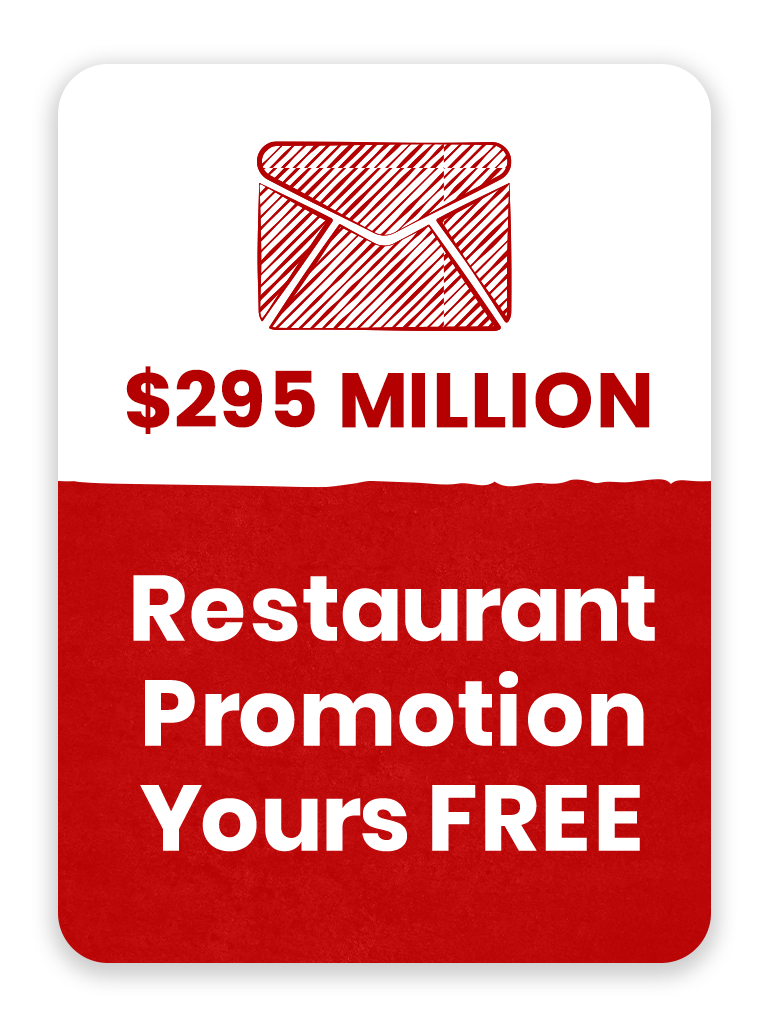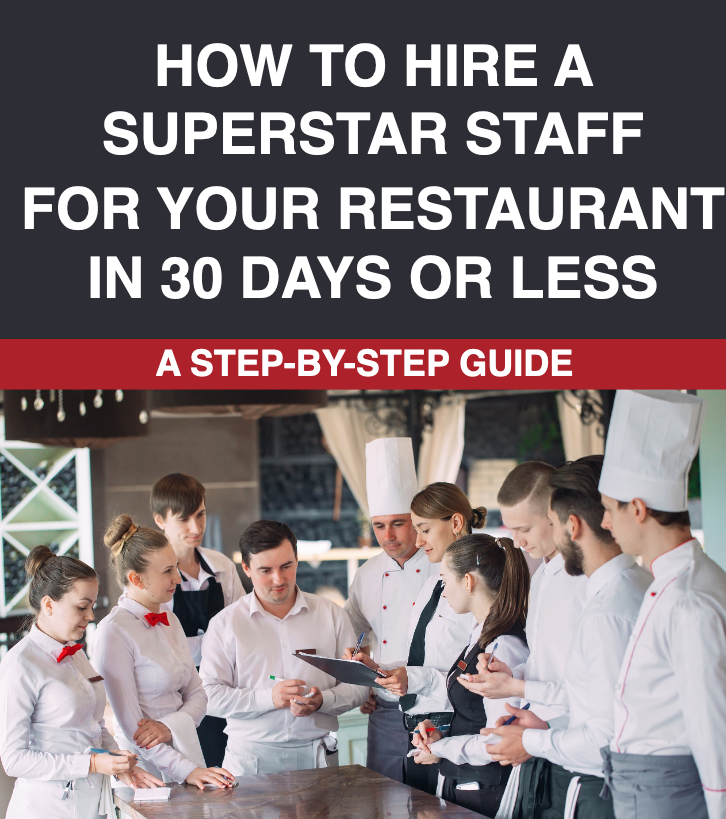It’s that time of year again when your business needs to think about planning a marketing calendar. A daunting task for most, to say the least! Likely, you didn’t get into the restaurant business because you wanted to spend your time studying and implementing marketing strategies. But for many restaurant owners, marketing is a necessary evil because, without it, most customers will never find their way through your door.
It’s not because what you provide isn’t amazing; it’s because hundreds of options are available to them, including eating at home. And because they lead busy lives, spending almost no time, if any, thinking about your business, you need to do something to put your business in front of them to get their attention.
If you’re like most business owners, you want to take advantage of every marketing opportunity that comes your way and eliminate any sales dips throughout the year. But how can you do this if you don’t have a plan?
You certainly want to avoid being beholden to the ad sales reps who want to sell you space, not results. Online marketing avenues are complicated and constantly changing; how do you even know where to begin?
And if you leave it to “word of mouth” that people will find you on their own, you are only serving a small portion of the population that needs and wants what you offer.

Let’s start with the basics to create a strategic marketing plan for 2023 that will help you take advantage of current events and opportunities and help keep your income more even each month.
Putting It On a Map
A marketing plan is simply a roadmap for the year ahead. It’s the path you will take to meet your sales goals. Think about the year in chunks; many do it in quarters or by month – choose a timeline that works for you.
Write down a list of events and opportunities in each of those chunks that you might be able to connect some marketing to. Holidays important to your target market, community events, big events like an election, the Olympics, or the Superbowl, celebrations relevant to your business, and periods of traditional slow sales you like to eliminate.
Connecting your marketing around an event already in your customers’ minds (called slipstreaming) gives you credibility, increases engagement, and adds a level of fun and curiosity to your business.
Free ideas for you: Create your own Olympics, having menu items compete against each other. With an election, hold a fun election, every time someone dines with you, they get to cast a vote for their candidate. Host a Superbowl Party with contests and special snacks. Using the ideas that suit YOUR business type and YOUR target customers. From the list, choose the ones in each of your time chunks that you will focus on to build your marketing activities around.
A marketing calendar will have your individual campaigns listed on it and will answer the following questions to help guide you along for each one. We will pick a very familiar campaign, our No Peeking Campaign, to demonstrate the process.
1) Decide Your Goal. What Are My Message And Offer?
Dig the well before you thirst – know your sales ups and down each month, week, or day. If your lunches are slowest on Tuesdays, how can you focus on that? If July is quiet, what can you do to create more traffic? Counteracting slow periods is one of the best reasons to get creative with your marketing.

-
-
- We want to increase our January sales X% over last January’s sales.
- January is always our slowest month, and December our busiest, so we will create a campaign to get the December guests back to see us in January.
-
Perhaps your goal is to get more new customers signed up for your rewards program. Or Sell more of a specific item within a particular time period. Once you know your goal, it is easier to decide on the path to get there.
2) Determine Your Target Audience.

Each campaign you create might have a different target market and distinct audience segments. Another December campaign might target those customers who have previously purchased gift certificates to purchase them again this year. Or a target might be businesses looking to host a holiday lunch for their team.
- The No Peeking campaign will be for any customers who spend money with you in December.
- ·We know this is a busy time of year, and you want to encourage customers to return again when it ISN’T busy – i.e., January.
This is a crucial step. Consider each month of your calendar, who needs to be targeted, and list potential opportunities you might want to highlight.
3) What Is Your Message?
An irresistible offer is a key element in any restaurant marketing strategy. It entices customers to switch from their regular dining routine to your restaurant. There are many types of irresistible offers, free dessert or appetizer, a specialty cocktail, a free gift (like a Halloween pumpkin or sports-related memorabilia), gift certificates, a bundled package, a specialty menu, and VIP seating.
Offering a dollar or percentage amount is only beneficial if you offer it to people who already know, like, and trust you. These offers have been proven to encourage them to return more often and spend more money. You want to use something other than price offers for new customers as it will only encourage price shoppers.
And, you have a competitive advantage in that you don’t answer to the corporate higher-ups. You can only demonstrate your personality, company culture, unique selling proposition, and community involvement in any way you want to encourage business. You might not have their big budget, but you have your individuality, and that will win out every time.
-
- Our No Peeking campaign example uses curiosity or the “lotto effect.” Each customer in December is given a sealed red envelope to bring back within a date range in January/February.
- Inside each red envelope is a free gift – it could be a free drink or a $100 gift card. You pick the prizes and quantities you want to give away, so you control how much you invest in the campaign. But the customer sees high value in the offer because every envelope is a winner; they just need to bring it back to open in front of their server on their future visit.
When you create materials to go with the campaign, you want to connect the offer to the WHY you are offering it. What’s the story? The reason why you are giving this offer. In the Red Envelope case, it can be a thank you for their holiday season visit, a gift from Santa, or you want to make their January less gloomy.
Whatever it is, create a story.
What can you design, create, and offer so your customer looks at it and says, “why wouldn’t I do this?” It’s important to make sure that your offer is truly irresistible. You want customers to feel like they are getting a high perceived value, even if it isn’t costing you a lot. The offer should be something they would be excited to take advantage of.
4) How To Connect With Your Target

Now you can start thinking about what media you will use.
You would put it on your marketing calendar when you send reminder emails to your customer list in early January, reminding them of the red envelopes they might have. You’ll also add social media posting content to build more curiosity and to remind and encourage redemption
Each campaign will have different media needs, but in all cases, you want to use as many options as possible, email, test, direct mail, social media, in house marketing to communicate, remind, encourage, and create a connection.
5) Who Will Do What And By When?
Here’s where the rubber meets the road. A marketing calendar’s big benefit is avoiding the “I thought you were working on that” downfall. When a deadline arrives, and something hasn’t been done, it’s beyond frustrating, especially if it now causes panic, more expense, and added stress to implement last-minute marketing efforts.
- Back to our Red Envelope example. You want your envelope ready to hand out on a specific date – so you need to reverse-engineer your timeline.
- Who will research and order the envelopes, who will design and print the certificates, who will stuff the seal the envelopes, who will ensure they aren’t see-through, and who will ensure they are distributed on time? Who will gather, track, and report the results?
Or, you can just click a button, and we will handle it ALL for you.
Planning ahead means you can catch up in the final hours before the deadline or a holiday or event appears on the horizon. You realize you should be doing something around it and haven’t. Product ordering, printing, and staff training all require time in advance. A simple marketing calendar will allow you to prepare (stress-free) in advance and execute creative, memorable, and profitable marketing campaigns.
6) Measure and Report
The final, vital step for an effective marketing plan is to know if you have hit your goal. And you can only know that if you have a quantifiable result. Do the math for every campaign.
-
- How many red envelopes did we order? How many did we hand out? How many were redeemed? How much cost was invested in creating the campaign? How much cost is associated with the prizes? How much in sales came from those redeemed?
When you know the actual results, you can make solid decisions. What worked? What didn’t? Did we reach our goal? Was the campaign well received? Should we do it again?
This will help you plan next year’s calendar and decide if you can tweak winning campaigns to repeat them sooner. Making decisions based on facts rather than feelings is how to grow sales.
If planning out the entire year seems daunting, then do it in smaller sections at a time, like January through Match. Preparing now, using the information you know about your business, sales, community, and customers, means you can be unique and create a memorable experience for your customers. They’ll reward you by returning more often. And you will be rewarded with less stress because sales will be more even, and you won’t be hit with last-minute marketing panic.
If you’re interested in doubling your sales in January and starting 2023 off on the right foot with a plan. Utilizing your busy time in December to pack your restaurant in January… with the least expensive, most fun you can have with your customers and staff, something that has been tried, tested, and proven to work for thousands of restaurants… click the button below and turn January into one of the busiest months of the year.
We Do All The Work; You Keep All The Sales


Michael Thibault
Known as “The Done For You Marketing Guy for Restaurants.” International Speaker on Restaurant Marketing. Published contributing author of 4 Marketing Books. Industry expert on Google Searches and Review Sites. Recovering Independent Restaurant Owner and Caterer of over 21 years. And, all-around good guy.





